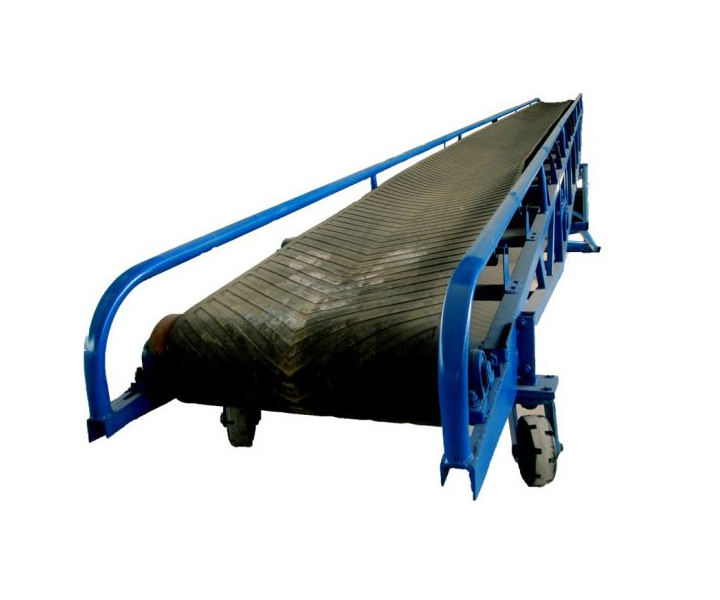
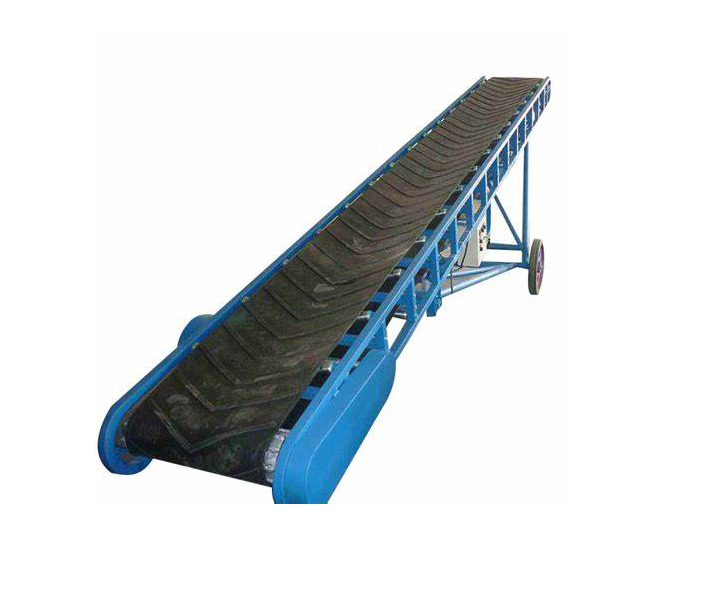
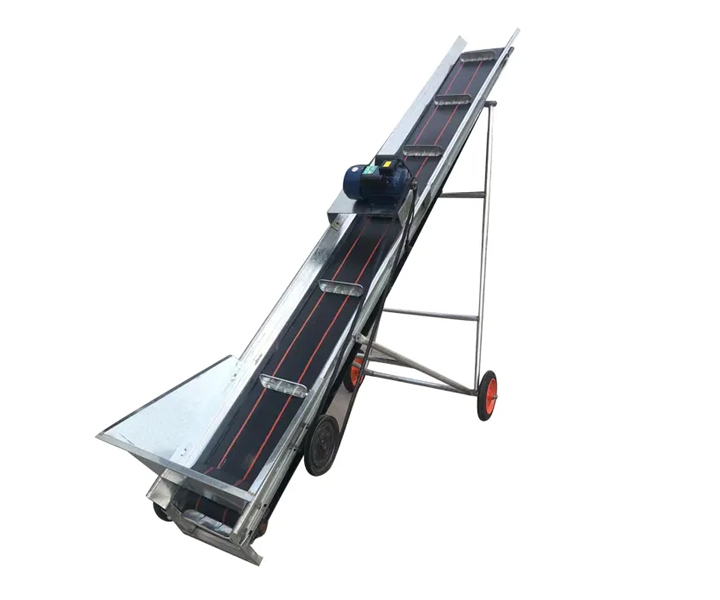
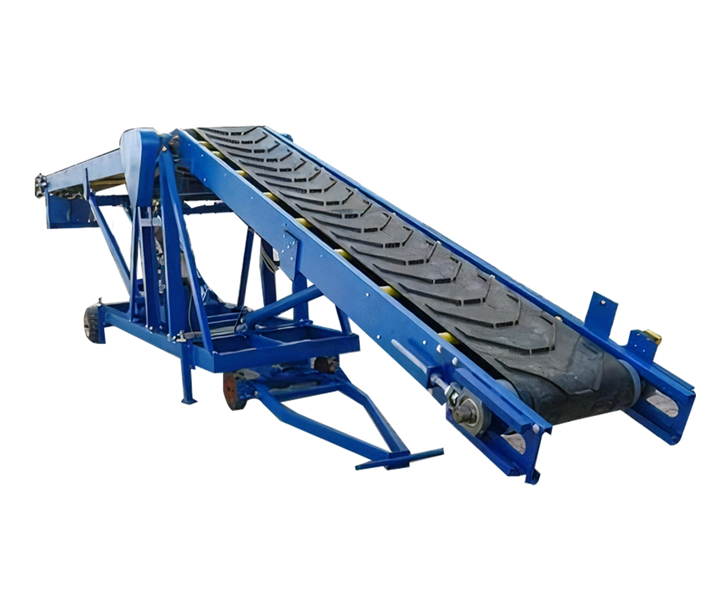
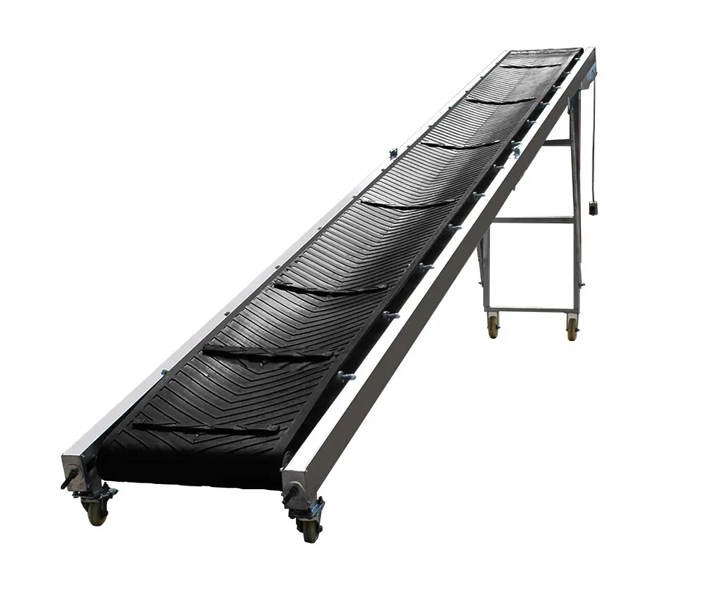





It is a conveying system made of rubber material for conveying various materials, products and packages.
![]()
![]()
![]()
Price:$800.00-$6,000.00/Set
Consult now and enjoy a 10% discount
Belt Material: Rubber
Belt Width: 400/500/650/600/800/1000/1200/1500mm
Conveying length: 10-30 meters
Conveying capacity: 30-3000t/h
Conveying speed: 1.25-2.0m/s
Voltage: 380V
Power: 0.4kW - 22kW
Application: It is mainly used for solid material transportation in various mining, metallurgy, steel, coal, hydropower, building materials, chemical, grain and other enterprises.
Commitment: Free Shipping/5 Days Delivery/30-Day Returns/Support Customization
Rubber belt conveyor is a type of conveyor system that uses a rubber belt as the conveying medium. The rubber belt is typically driven by a motorized pulley or a conveyor belt drive, which moves the belt along a series of rollers or idlers.
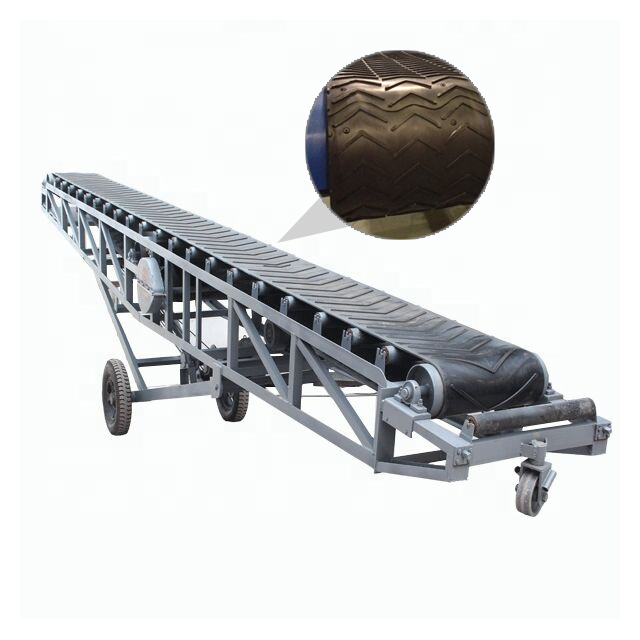
Rubber belt conveyors are designed with various components, including the rubber belt, pulleys or drive rollers, idlers or support rollers, and a frame or structure. The rubber belt is the main component of the conveyor system and is responsible for carrying the material being transported. The pulleys or drive rollers provide the driving force to move the belt, while the idlers or support rollers provide support and guidance for the belt.
Rubber conveyor belts are made of various materials, each with different properties and characteristics that make them suitable for specific applications. The following are some of the most common materials used in the construction of rubber conveyor belts:
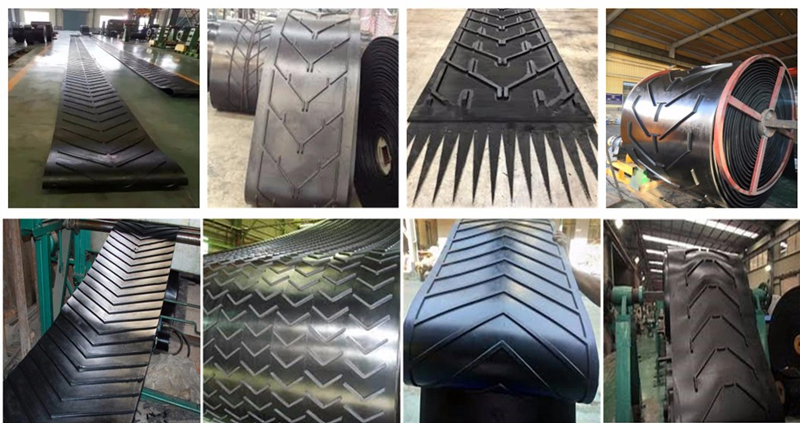
Natural rubber: Natural rubber is derived from the sap of the rubber tree and is highly elastic and durable. It is commonly used in the construction of conveyor belts for lightweight and medium-duty applications.
Synthetic rubber: Synthetic rubber is a man-made material that is designed to mimic the properties of natural rubber. It is commonly used in the construction of conveyor belts for heavy-duty applications, as it offers increased strength and durability.
Polyurethane: Polyurethane is a synthetic material that is highly resistant to abrasion, chemicals, and oil. It is commonly used in the construction of conveyor belts for food processing and other industries where hygiene and cleanliness are critical.
Neoprene: Neoprene is a synthetic rubber that is highly resistant to oil, chemicals, and heat. It is commonly used in the construction of conveyor belts for heavy-duty applications that require resistance to harsh environments.
Nitrile: Nitrile is a synthetic rubber that is highly resistant to oil, chemicals, and abrasion. It is commonly used in the construction of conveyor belts for applications that require resistance to harsh environments.
There are several types of rubber conveyor belts, each designed for specific applications and industries. The following are some of the most common types:
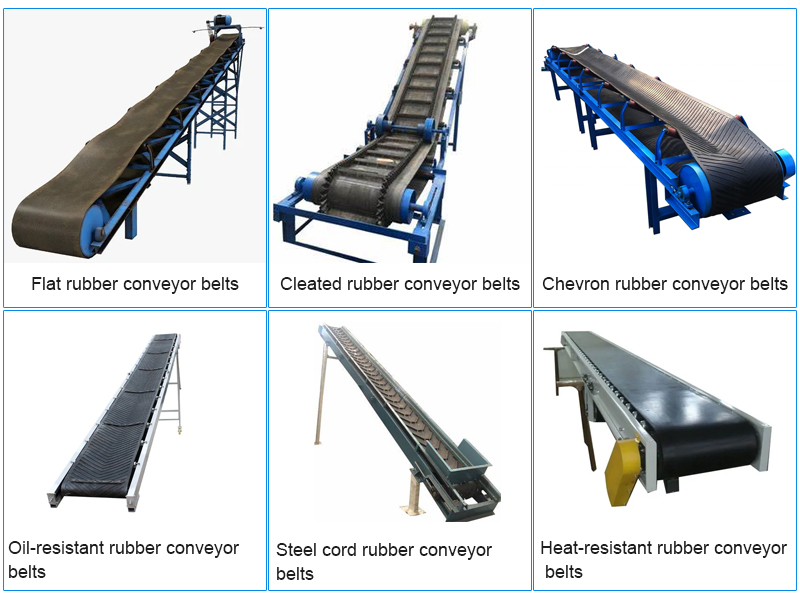
Flat rubber conveyor belts: Flat belts are the most commonly used type of rubber conveyor belts. They are made of a single layer of rubber and are used for transporting lightweight materials over short distances.
Cleated rubber conveyor belts: Cleated belts have raised sections or cleats along the surface of the belt, which help to keep the material being transported in place. They are commonly used in incline or decline applications.
Chevron rubber conveyor belts: Chevron belts have V-shaped cleats along the surface of the belt, which provide increased grip and prevent material from sliding or rolling back. They are commonly used for transporting materials on steep inclines.
Rough top rubber conveyor belts: Rough top belts have a textured surface that provides increased grip and prevents material from slipping during transportation. They are commonly used for transporting materials on inclines or in wet or slippery conditions.
Steel cord rubber conveyor belts: Steel cord belts are reinforced with steel cords for increased strength and durability. They are commonly used in heavy-duty applications, such as mining and quarrying.
Heat-resistant rubber conveyor belts: Heat-resistant belts are designed to withstand high temperatures and are commonly used in industries such as steel manufacturing, cement production, and glassmaking.
Oil-resistant rubber conveyor belts: Oil-resistant belts are designed to withstand exposure to oil and grease, making them suitable for use in industries such as food processing, automotive manufacturing, and chemical processing.
Rubber belt conveyors are widely used in various industries. Some of the most common applications for rubber belt conveyors include:
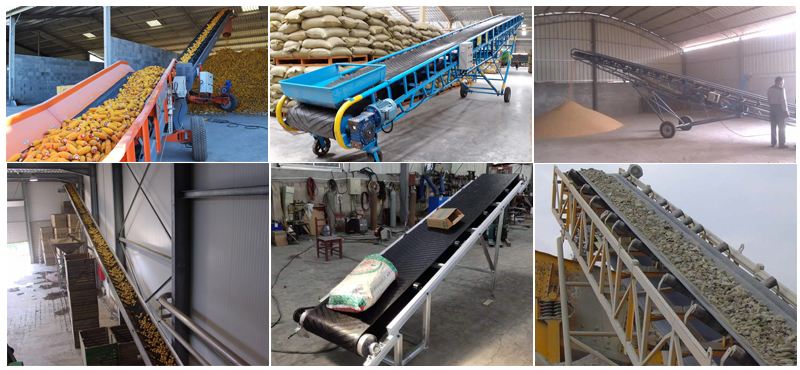
Mining: Used in the mining industry to transport bulk materials such as coal, ore and minerals.
Agriculture: Used in agriculture to transport grain, seeds, and other agricultural products.
Food Processing: Rubber belt conveyors are used in the food processing industry to transport packaged goods and raw materials such as fruits, vegetables and grains.
Manufacturing: Used to transport raw materials, finished products and packaging materials.
Recycling: Shipping various types of recyclable materials such as plastic, metal and paper.
Construction: Used on construction sites to transport heavy materials such as concrete and construction waste.
Versatility
Available in a variety of configurations and applications including horizontal, inclined and vertical conveying. They can also be customized to handle a wide variety of materials and products.
Efficient
It can quickly and continuously convey materials with minimum energy consumption, and the weight of a single piece is 100 kg.
Low maintenance cost
Requires very little maintenance as they have few moving parts and are designed for durability and reliability. This reduces operating costs and increases uptime.
Safety
Rubber belt conveyors are designed with safety features such as emergency stop switches and safety covers to prevent accidents and injuries.
Run quietly
Quiet operation, suitable for applications where noise levels need to be kept to a minimum.
Easy to install
Rubber belt conveyors are relatively easy to install and can be quickly integrated into existing production lines or processing systems.
The main difference between rubber belt conveyors and other material belt conveyors is the type of belt material used in the construction of the conveyor system. While rubber belt conveyors use a rubber belt as the conveying medium, other material belt conveyors may use a variety of materials, such as PVC, polyurethane, neoprene, or fabric.
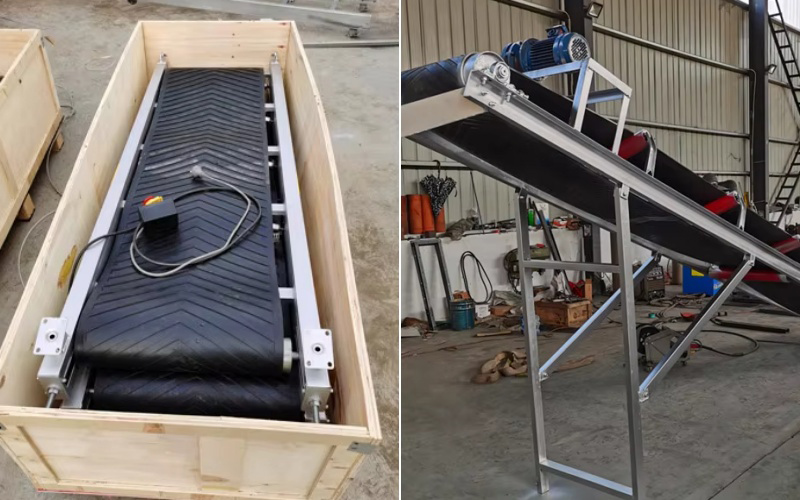
Here are some key differences between rubber belt conveyors and other material belt conveyors:
Material handling: Rubber belt conveyors are often used for conveying bulk materials, such as grains, ores, and minerals, while other material belt conveyors may be better suited for handling lightweight or heavy-duty materials, such as food, automotive parts, or construction debris.
Durability: Rubber belt conveyors are known for their durability and resistance to wear and tear, while other material belt conveyors may be more prone to damage from abrasion, chemicals, or heat.
Noise level: Rubber belt conveyors are generally quieter than other material belt conveyors, making them suitable for applications where low noise levels are important.
Maintenance: Rubber belt conveyors require minimal maintenance, while other material belt conveyors may require more frequent maintenance, such as belt replacement or tightening.
Cost: The cost of rubber belt conveyors may be higher than other material belt conveyors, depending on the specific application and requirements of the conveyor system.
| width (mm) |
Conveying length(m) power(kw) |
transfer speed (m/s) |
Delivery volume (t/h) |
||
| 400 | ≤10 3 |
12-15 3-4 |
15-30 4-7.5 |
1.25-2.0 | 30-60 |
| 500 | ≤10 3 |
12-15 4-5.5 |
15-30 5.5-7.5 |
1.25-2.0 | 40-80 |
| 650 | ≤10 4 |
12-15 7.5 |
15-30 7.5-11 |
1.25-2.0 | 80-120 |
| 800 | ≤10 4 |
12-15 7.5 |
15-30 7.5-15 |
1.25-2.0 | 120-200 |
| 1000 | ≤10 5.5 |
10-20 7.5-11 |
20-40 11-22 |
1.25-2.0 | 200-320 |
| 1200 | ≤10 7.5 |
10-20 7.5-15 |
20-40 15-30 |
1.25-2.0 | 290-480 |
| 1400 | ≤10 11 |
10-20 15-22 |
20-40 22-45 |
1.25-2.0 | 400-680 |
| 1600 | ≤10 15 |
10-20 22-30 |
20-50 30-75 |
1.25-2.0 | 600-1080 |
| 1800 | ≤10 18.5 |
10-20 30-45 |
20-50 45-110 |
1.0-2.0 | 800-1500 |
| 2000 | ≤10 22 |
10-20 45-55 |
20-50 55-132 |
1.0-2.0 | 1000-2000 |
| 2400 | ≤10 30 |
10-20 55-75 |
20-50 75-185 |
1.0-2.0 | 1500-3000 |
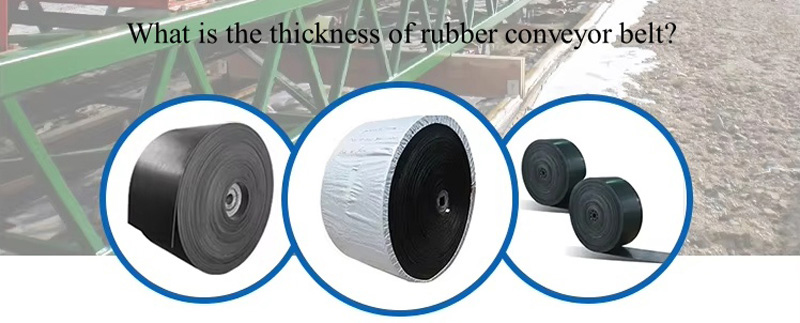
The thickness of a rubber conveyor belt can vary depending on the application and the specific requirements of the conveyor system. Generally, rubber conveyor belts range in thickness from 1/8 inch (3.2 millimeters) to 1 inch (25.4 millimeters).
The thickness of the belt is an important consideration, as it can affect the strength, durability, and flexibility of the conveyor system. Thicker belts are generally stronger and more durable, but may be less flexible and require more power to operate.
Thinner belts may be more flexible and require less power, but may be more prone to wear and tear.
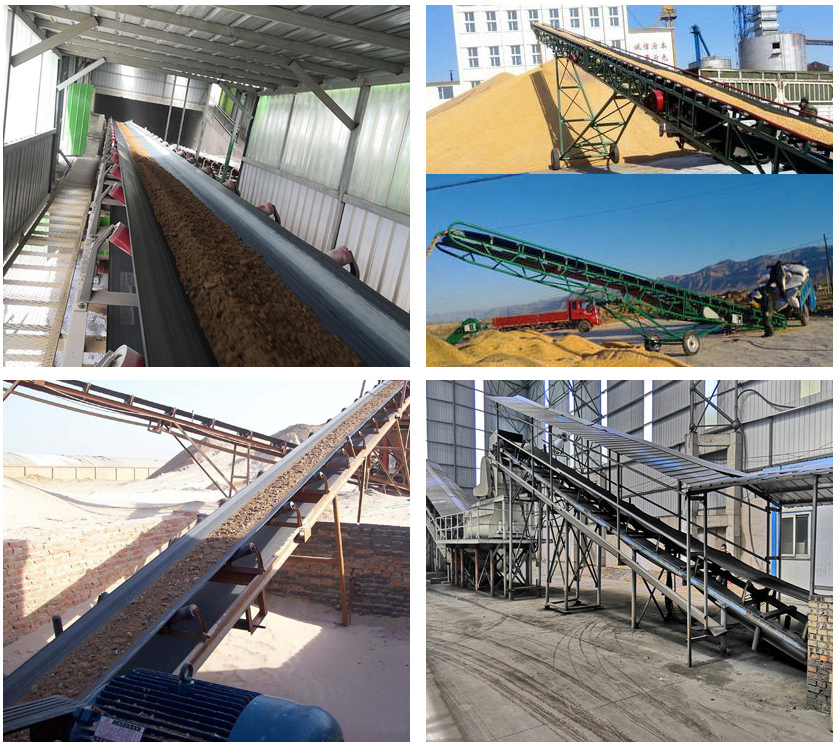
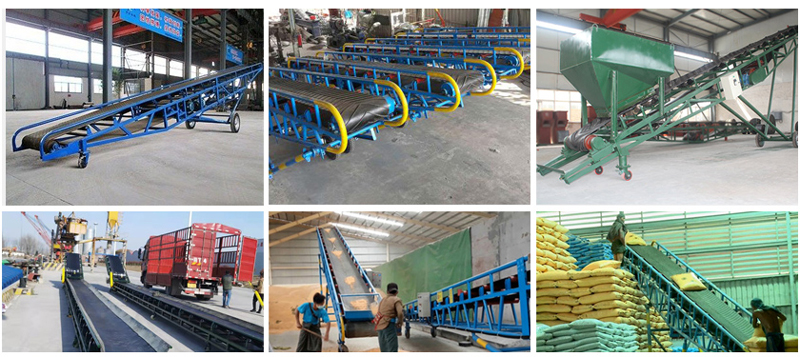
As a professional conveyor manufacturer, Xinxiang Dahan has rich experience and outstanding technical strength in the field of rubber belt conveyors. The manufacturer is committed to the research and development, design and manufacture of high-quality and high-efficiency rubber belt conveyors. The products produced are widely used in mining, ports, building materials, metallurgy, chemical industry, electric power and other industries. As a leading manufacturer of rubber belt conveyors, Xinxiang Dahan pays attention to product quality and technological innovation. Dahan has advanced production equipment and a strict quality control system. At the same time, it also actively introduces and applies advanced technologies to continuously improve the performance and efficiency of its products. The manufacturer provides comprehensive pre-sales consultation and after-sales support to provide customers with personalized solutions.
Address:China,Yanjin county forest park gate to the west 1000 meters north road.